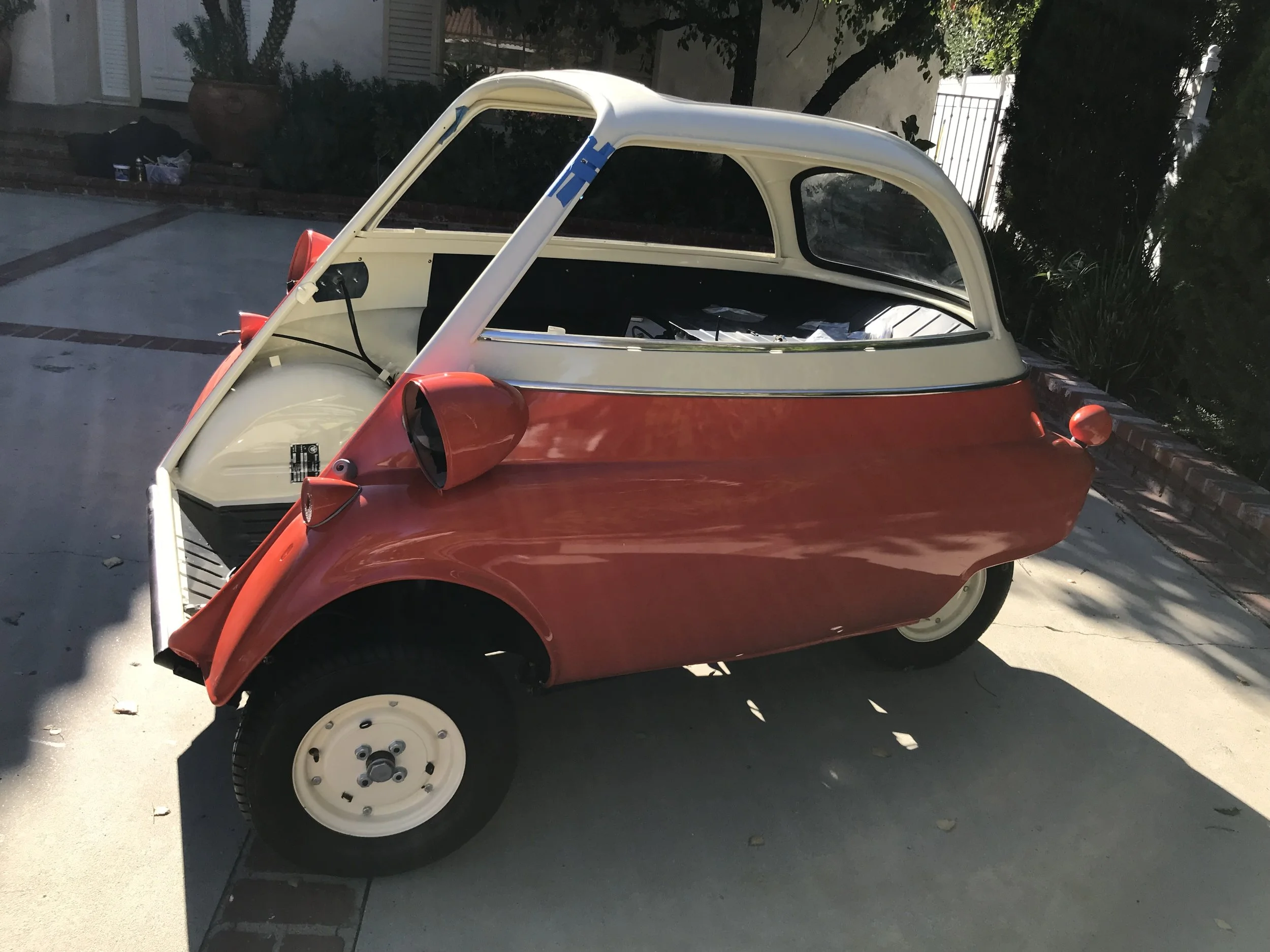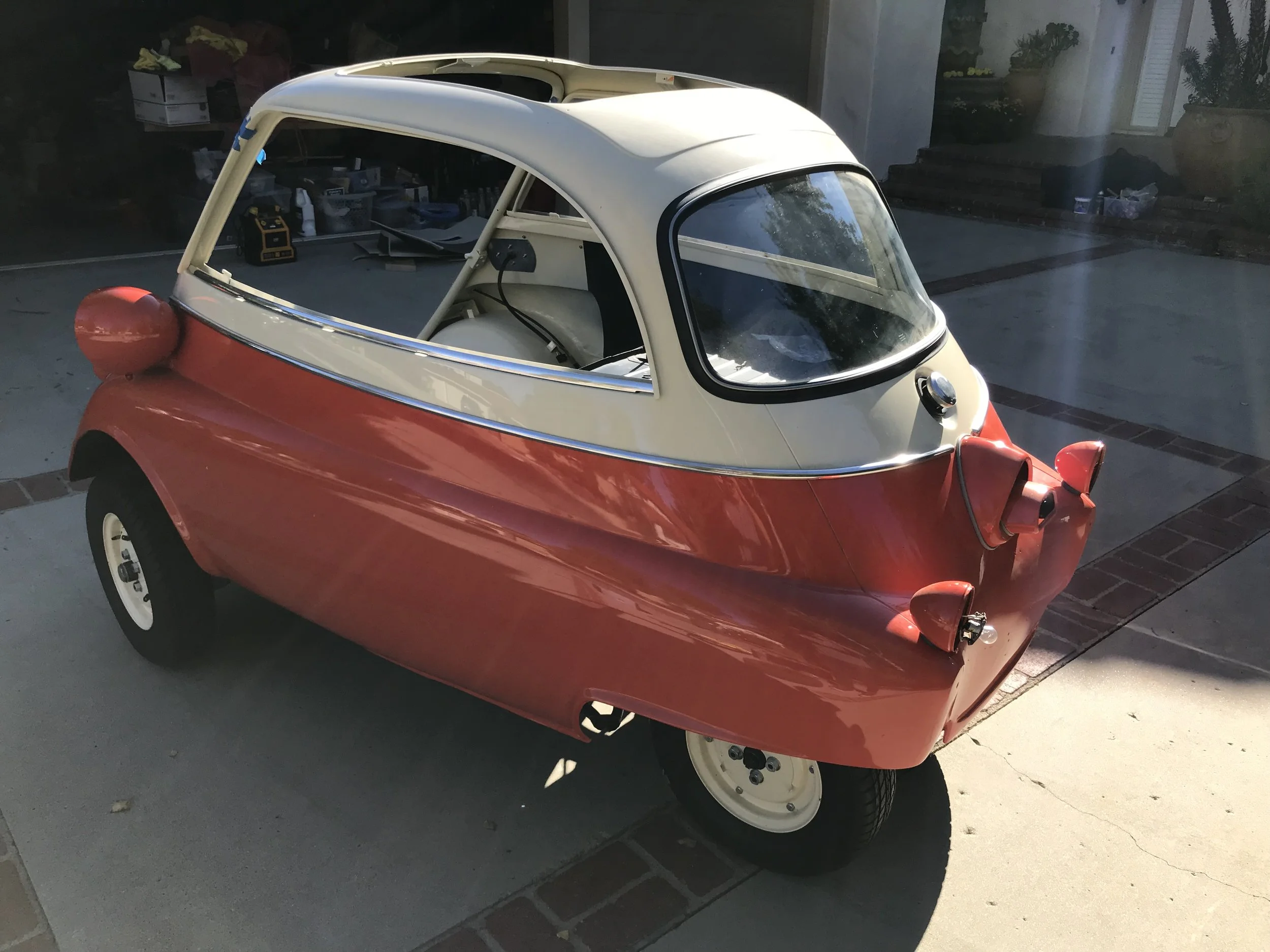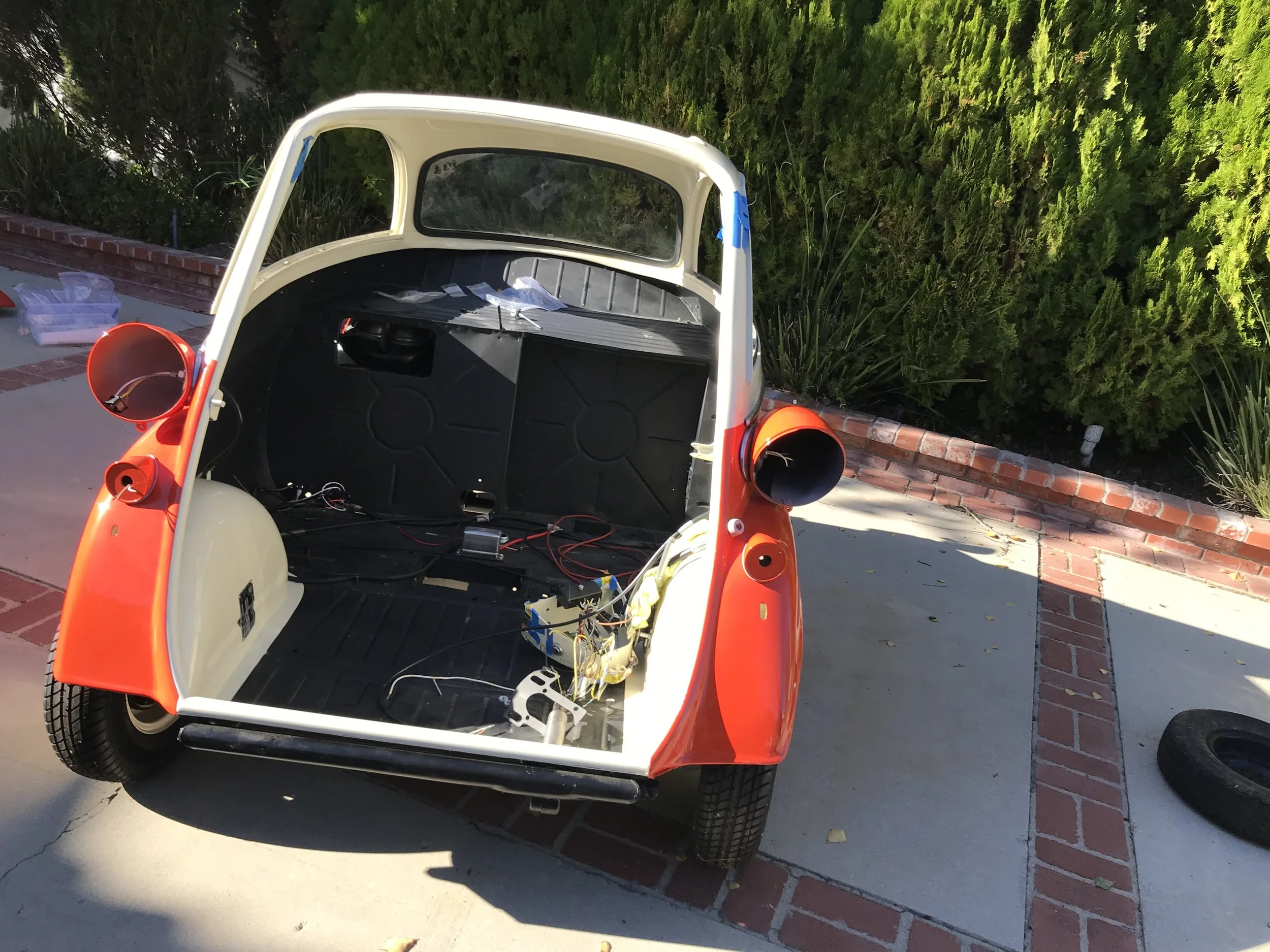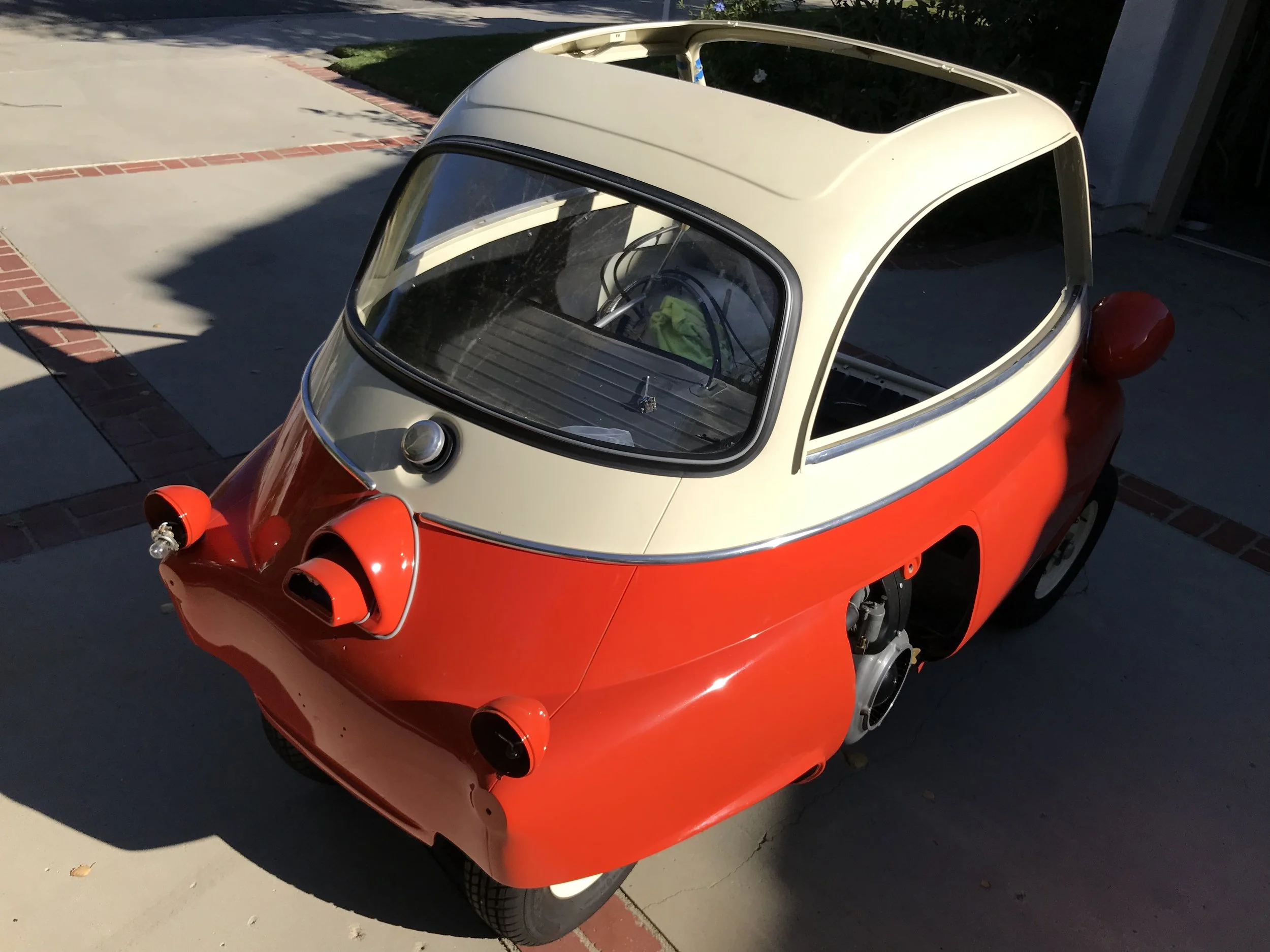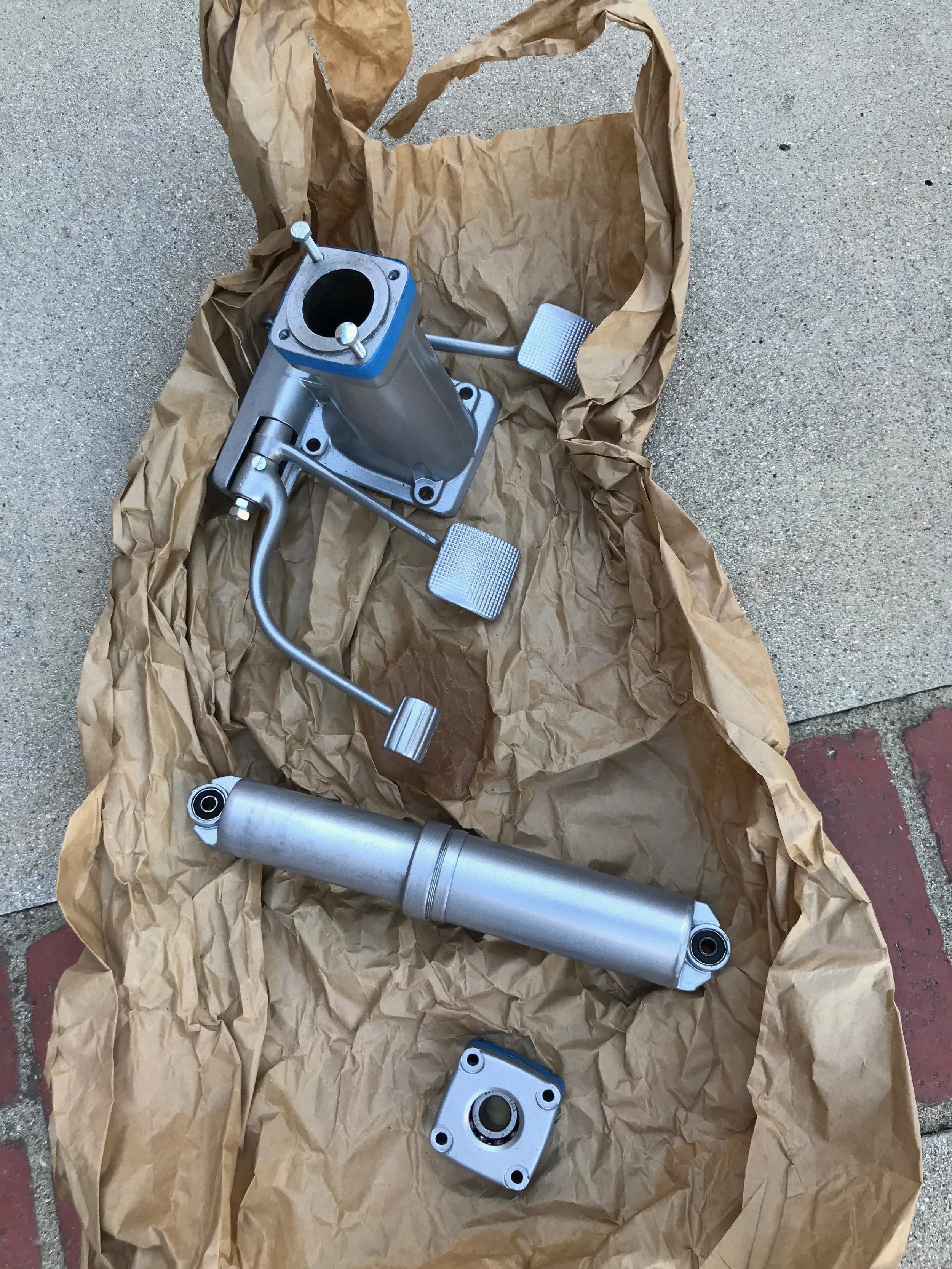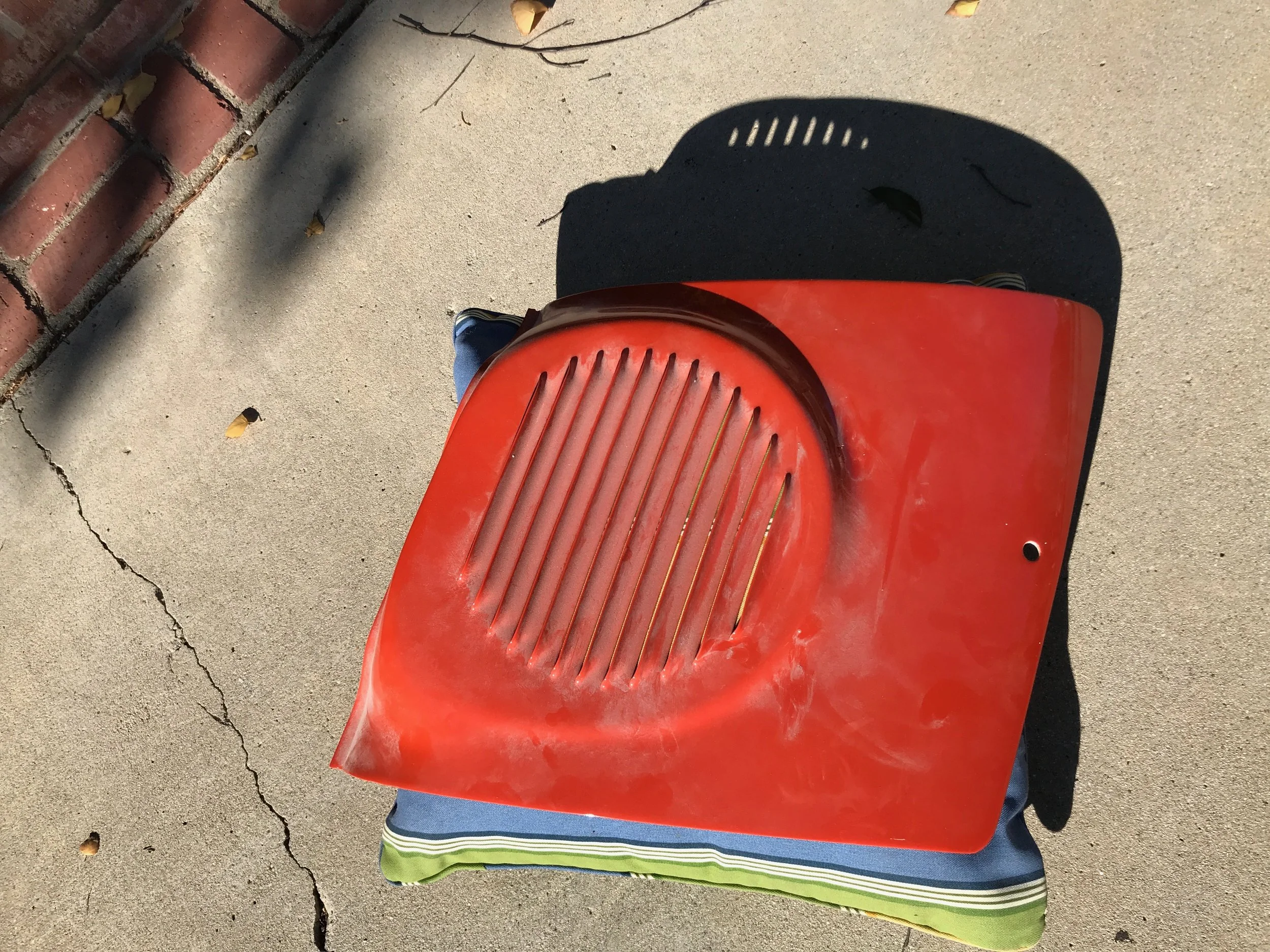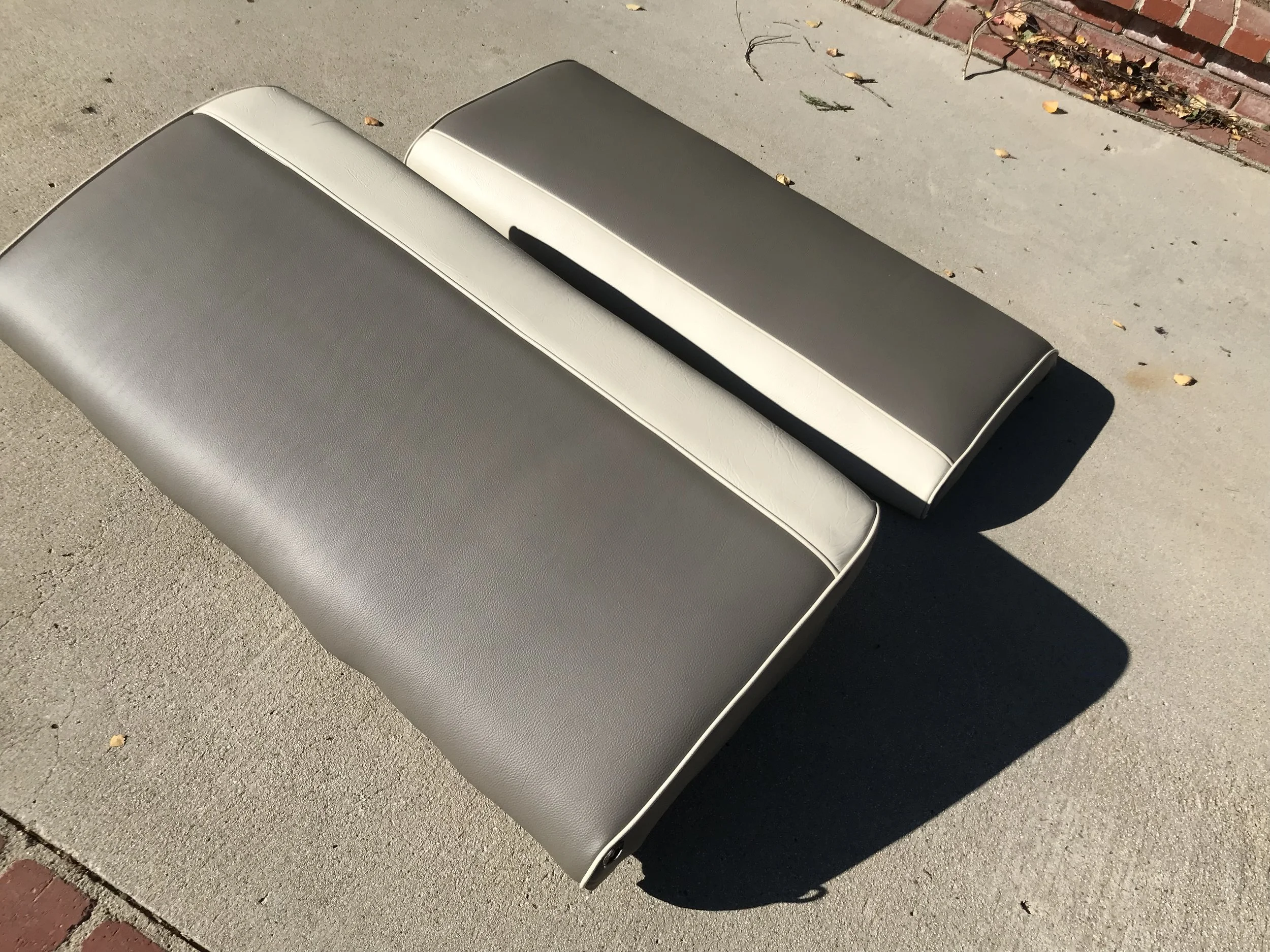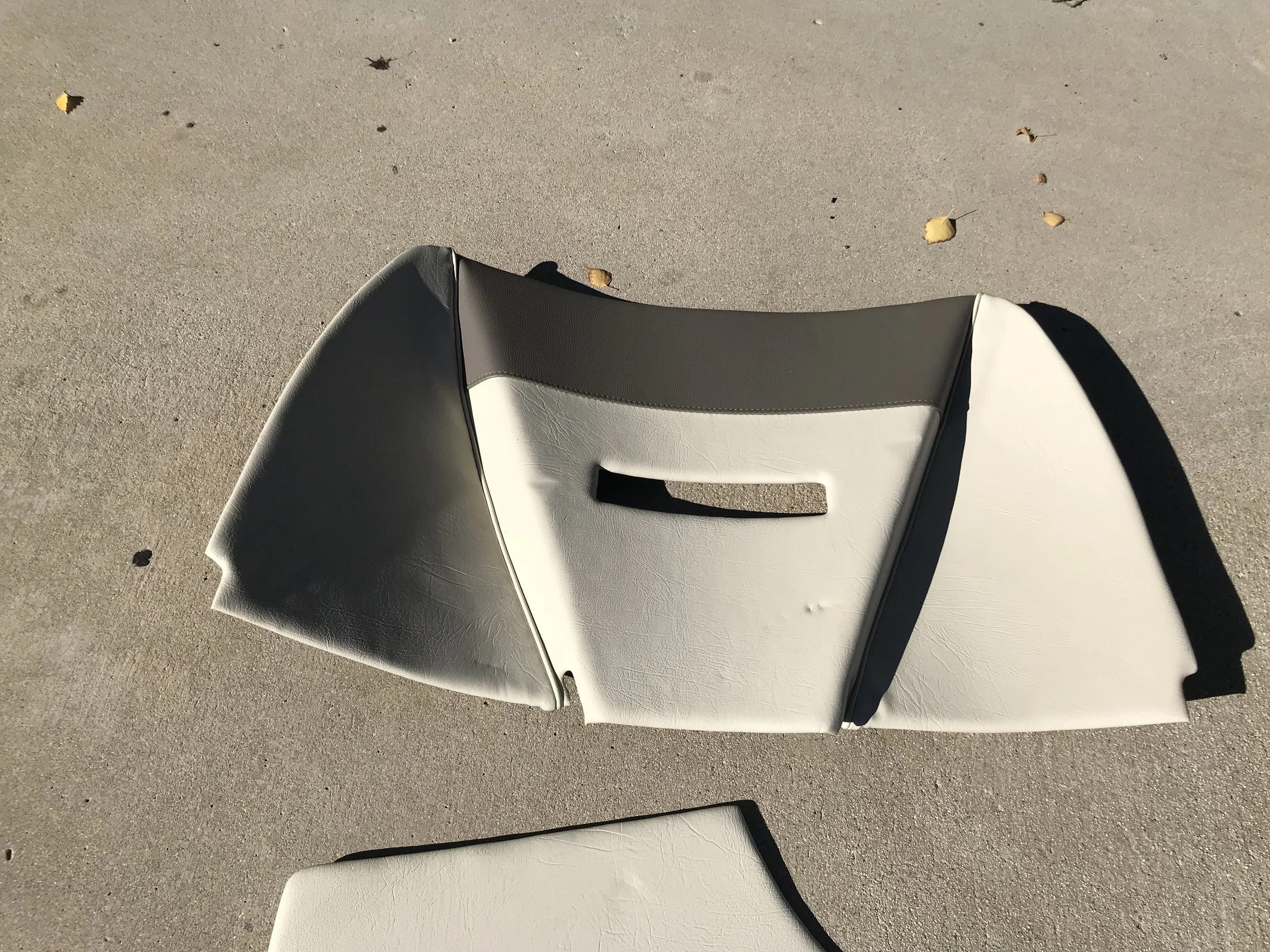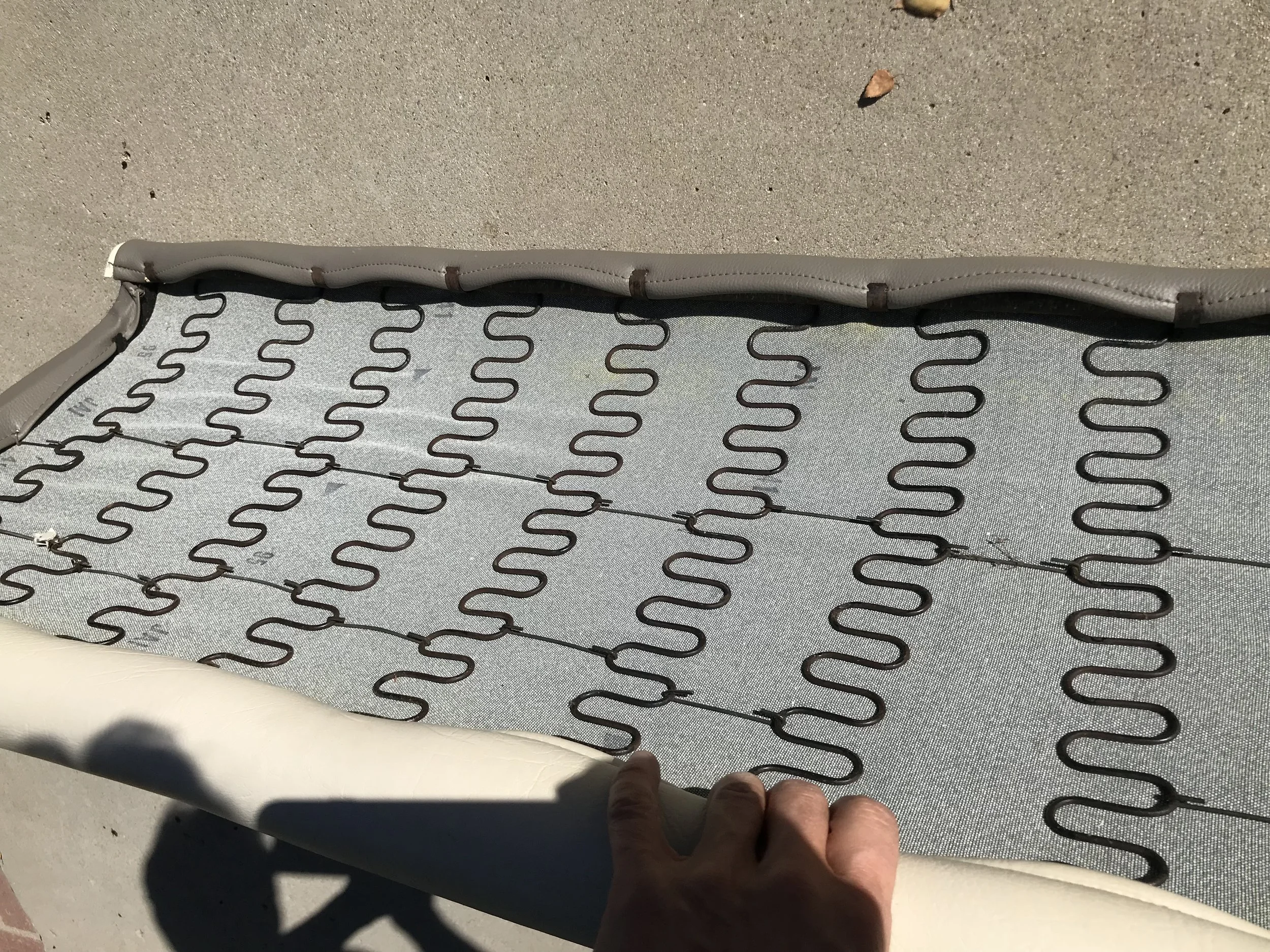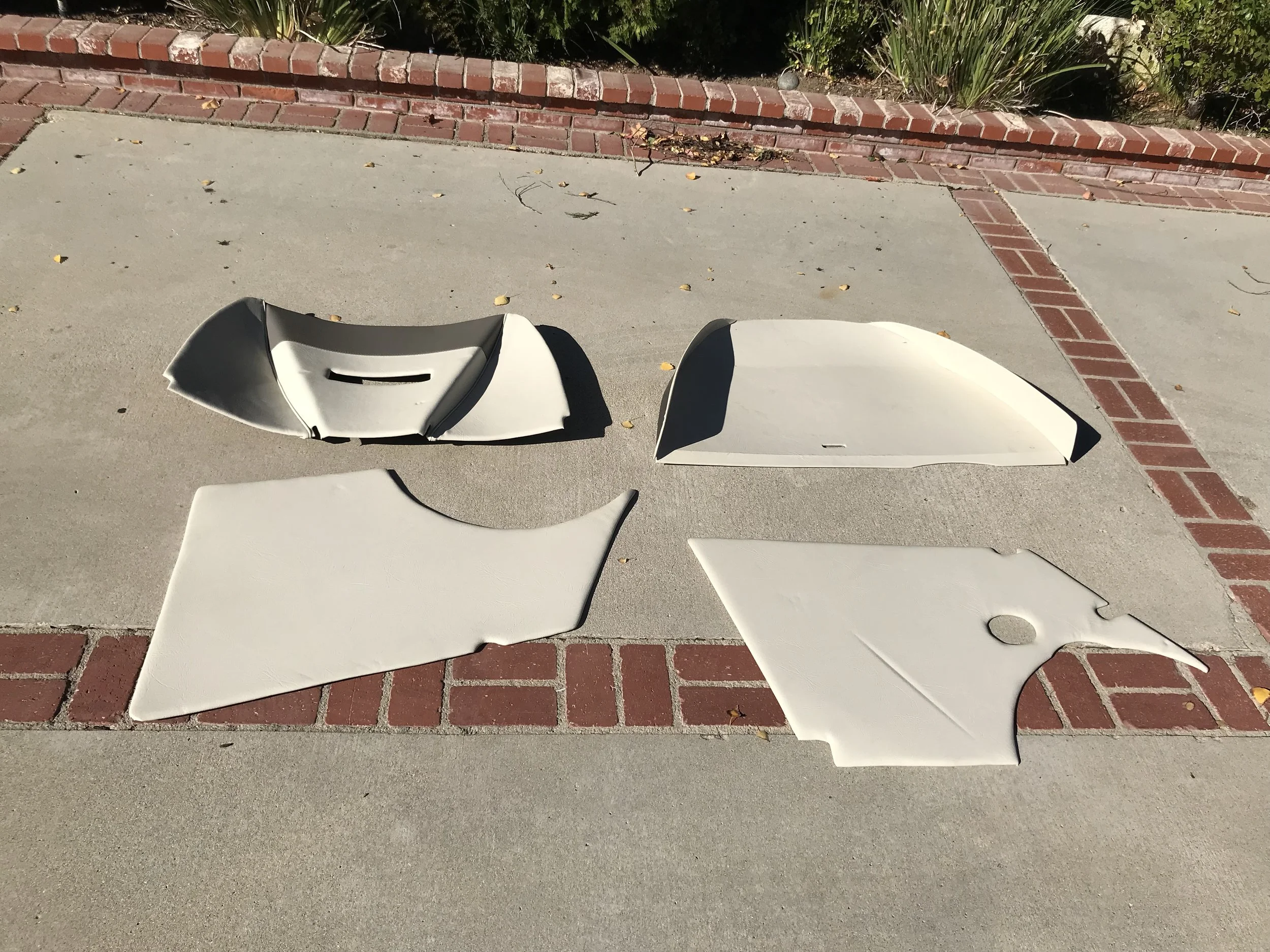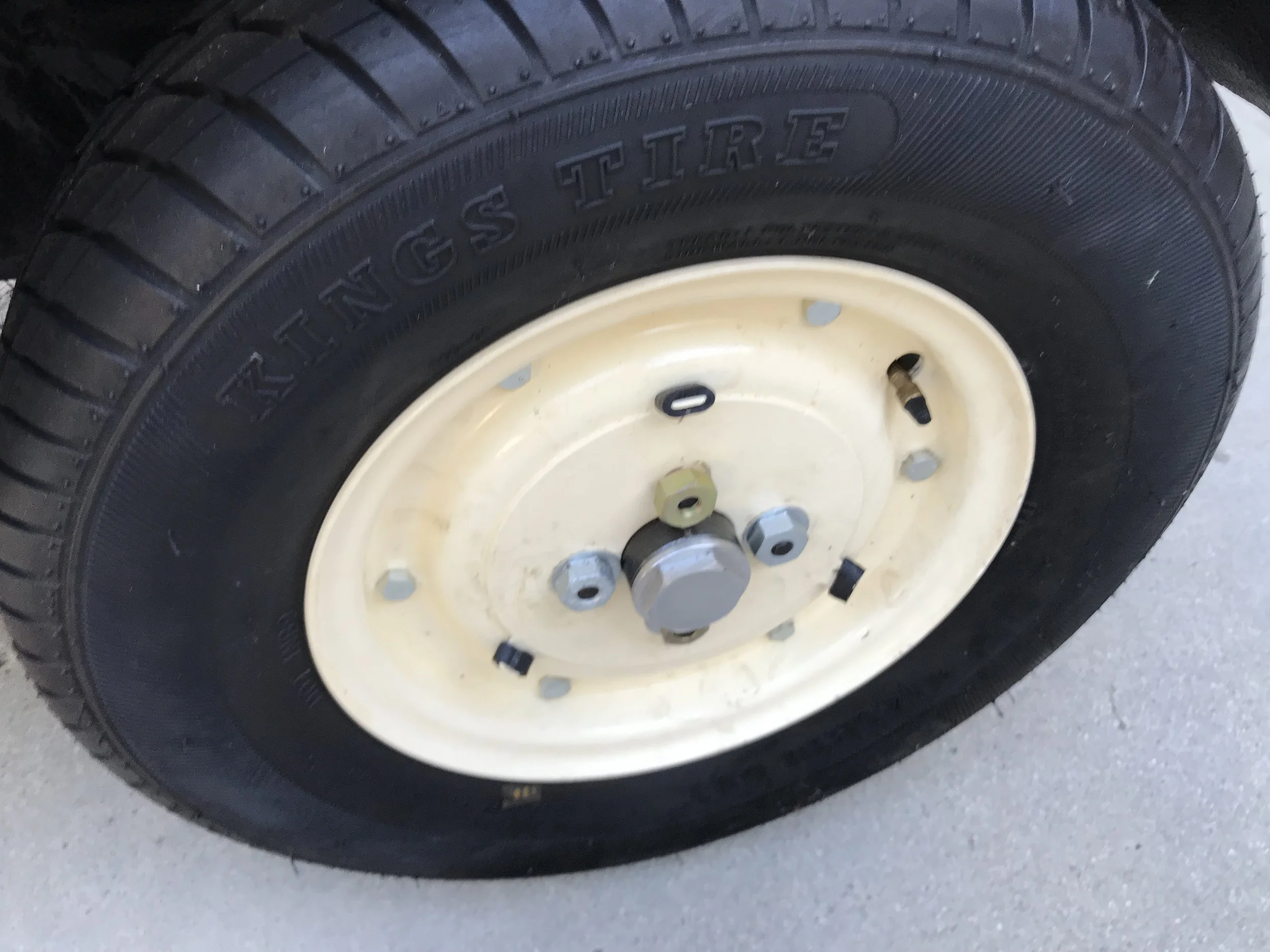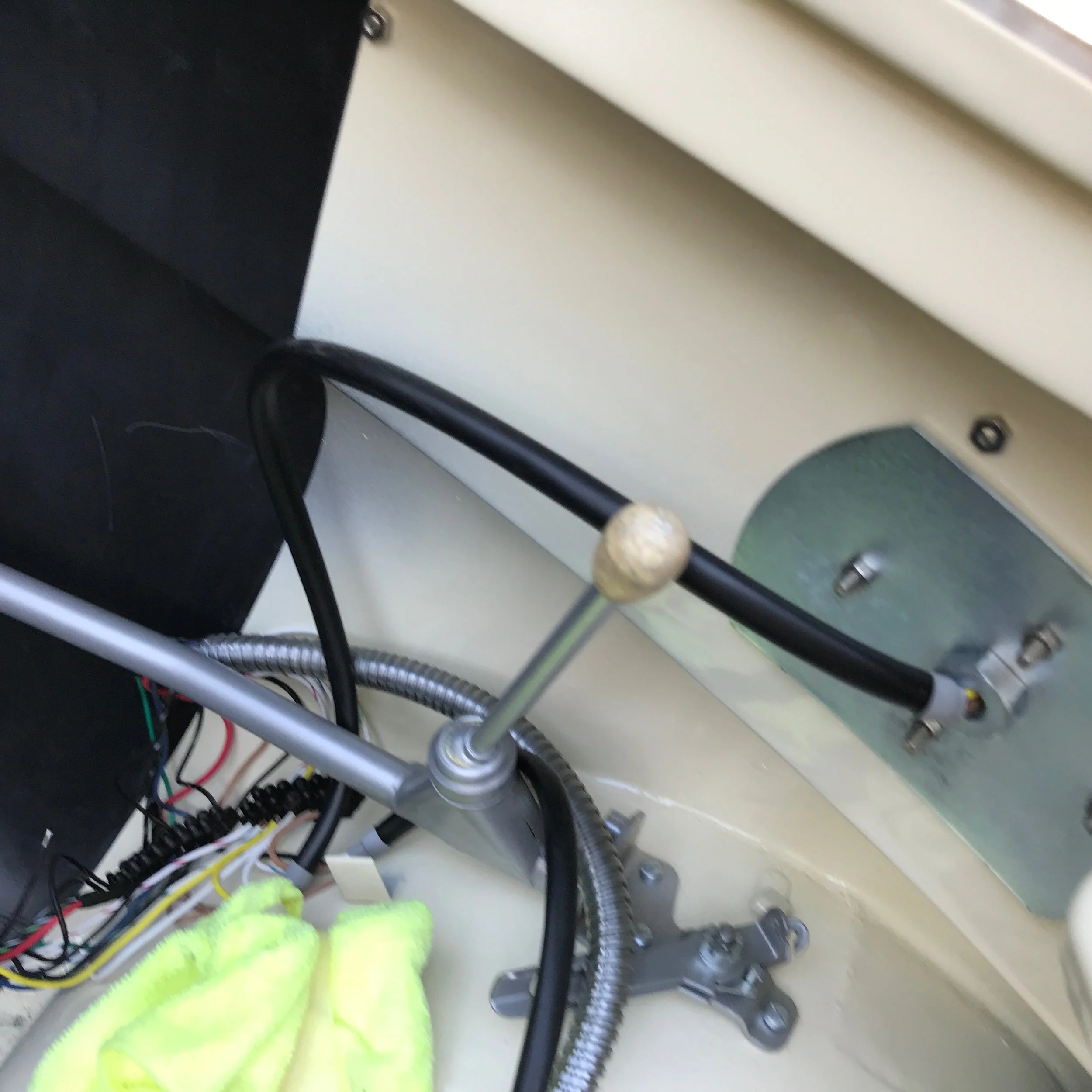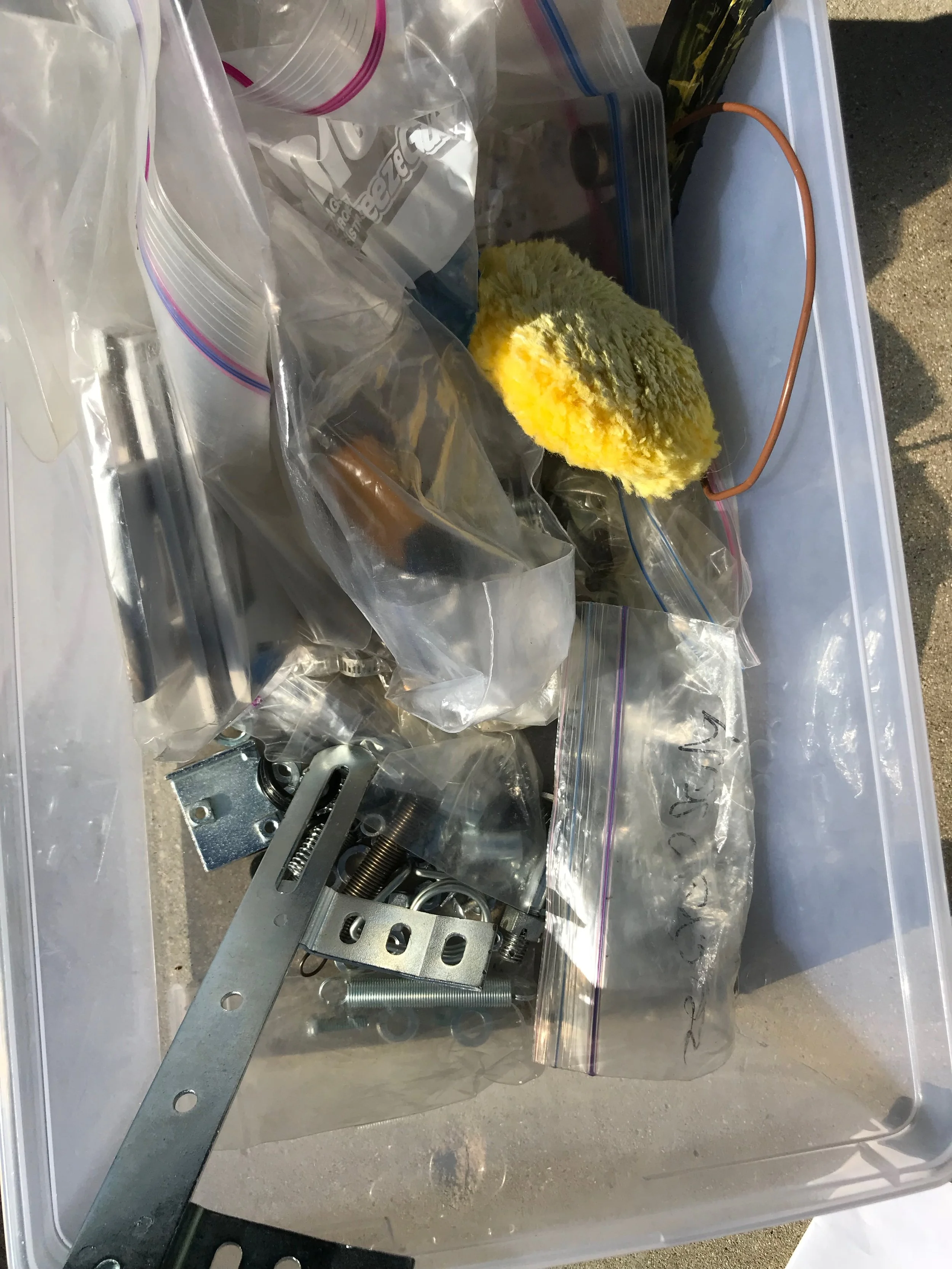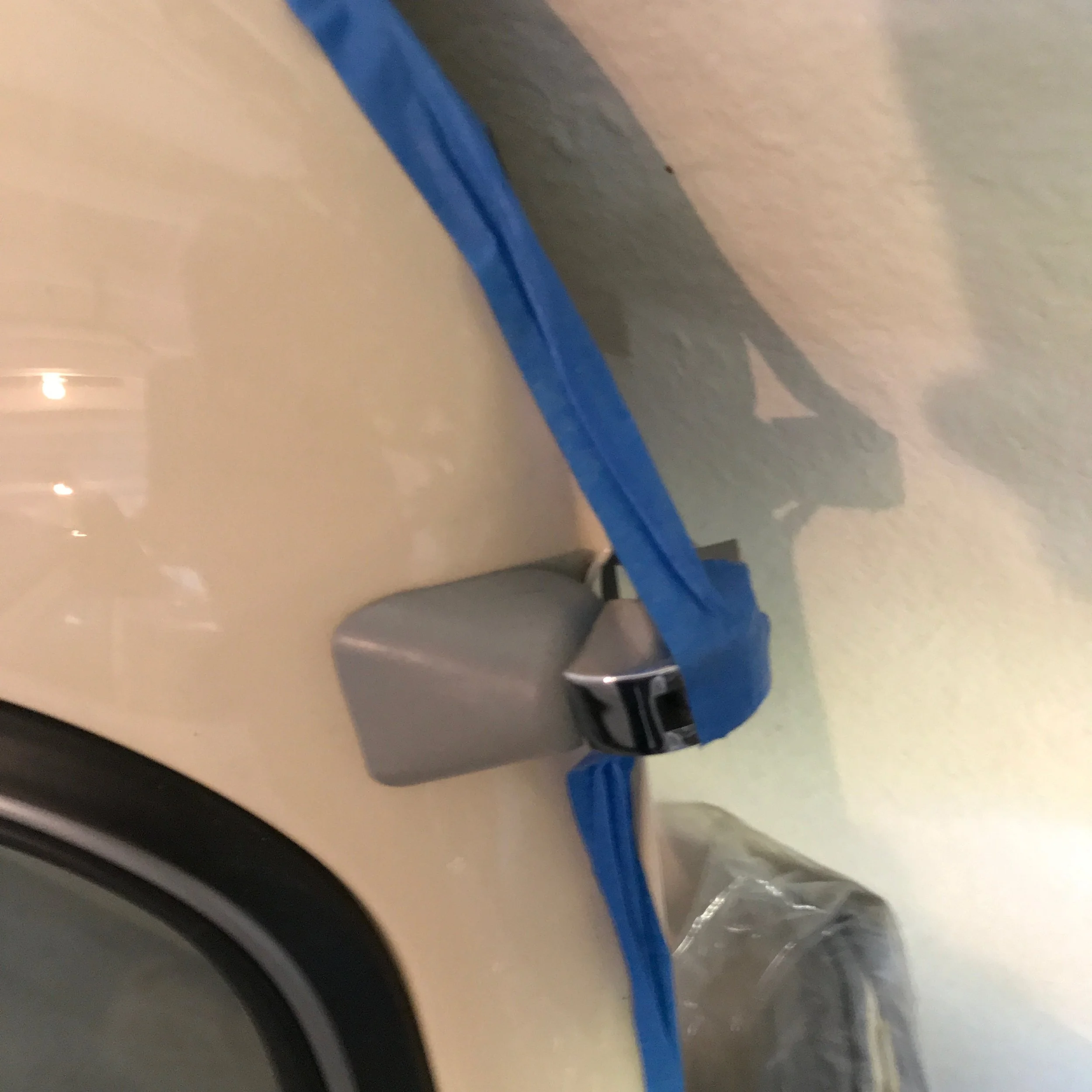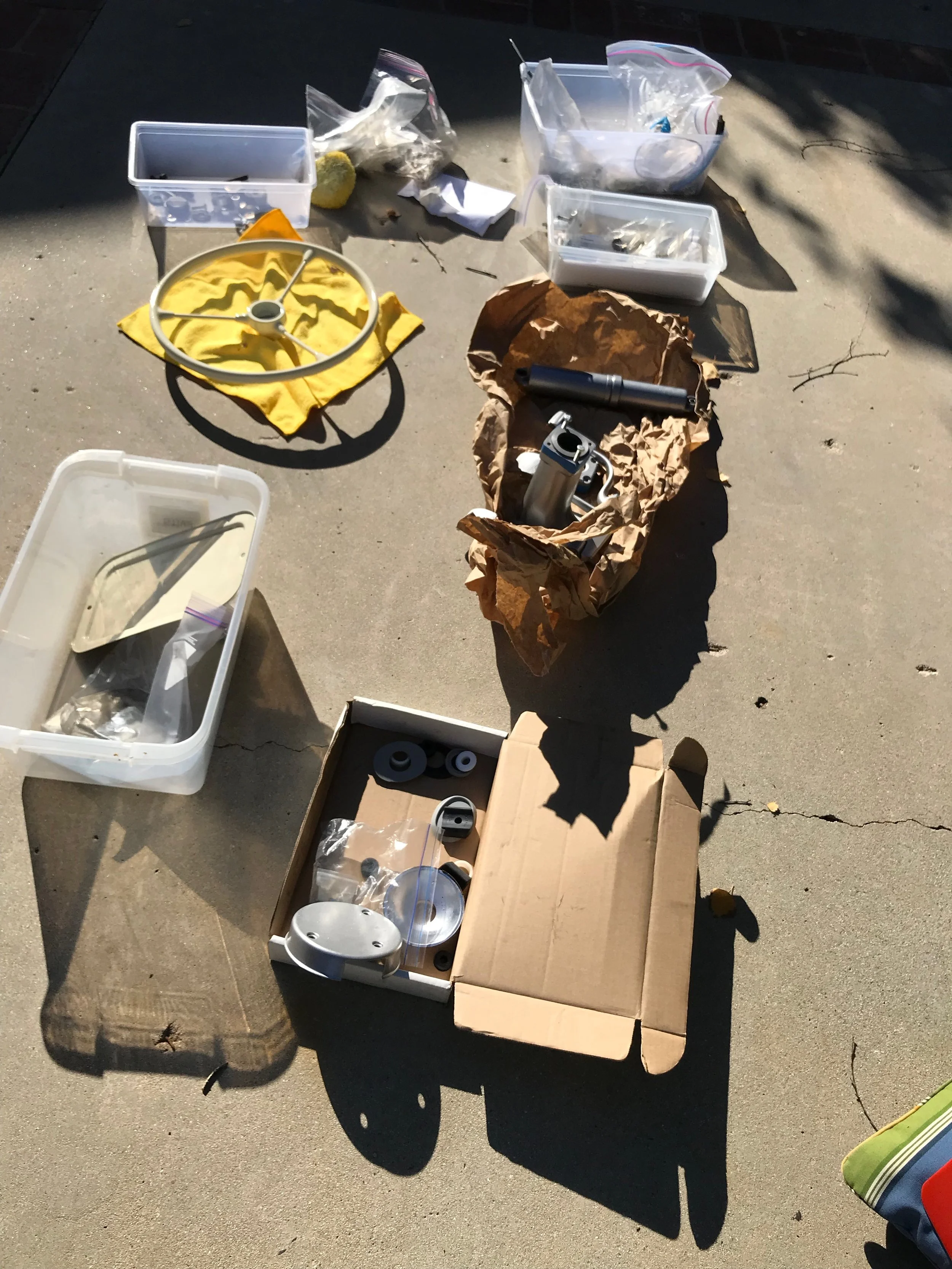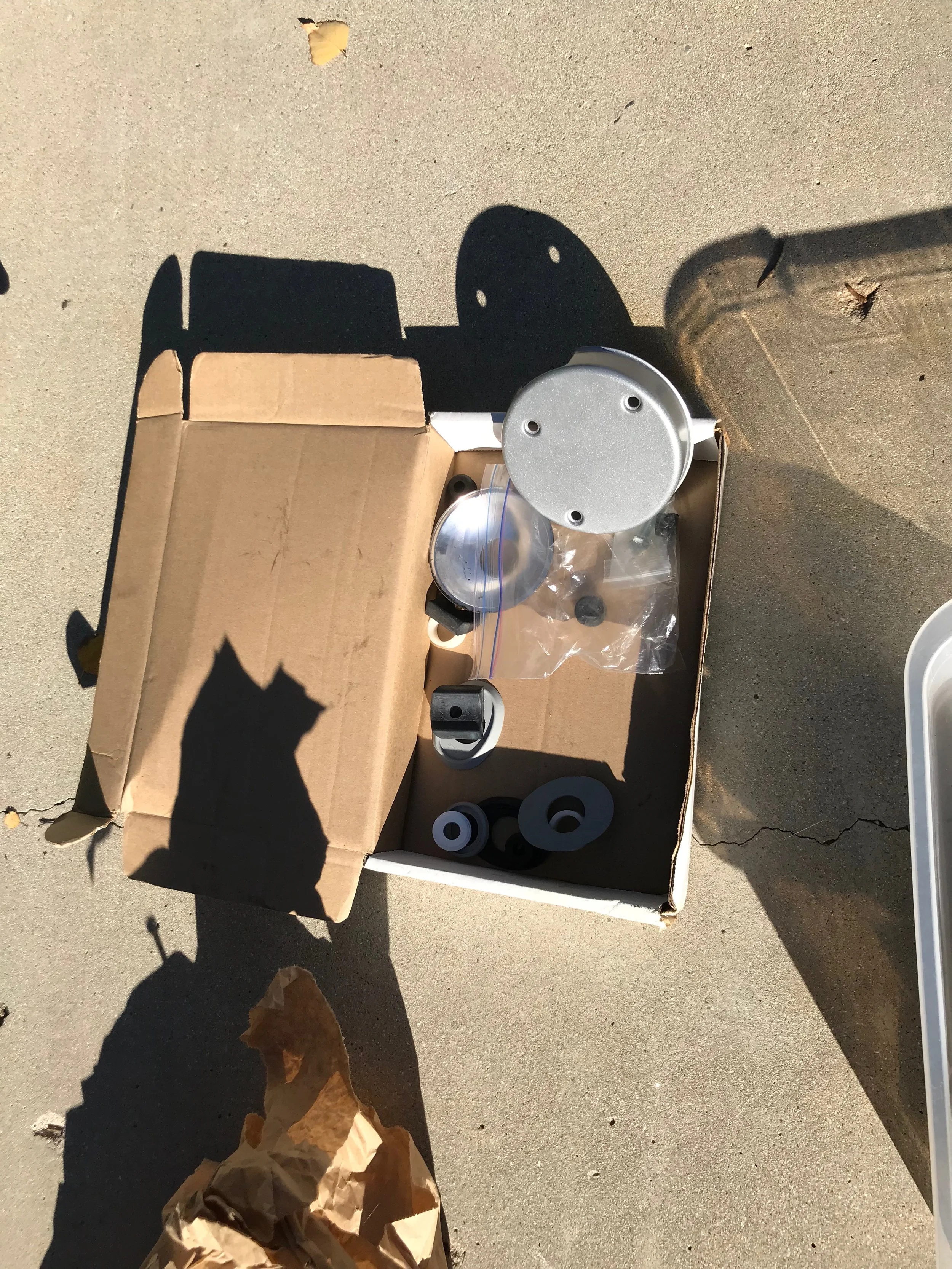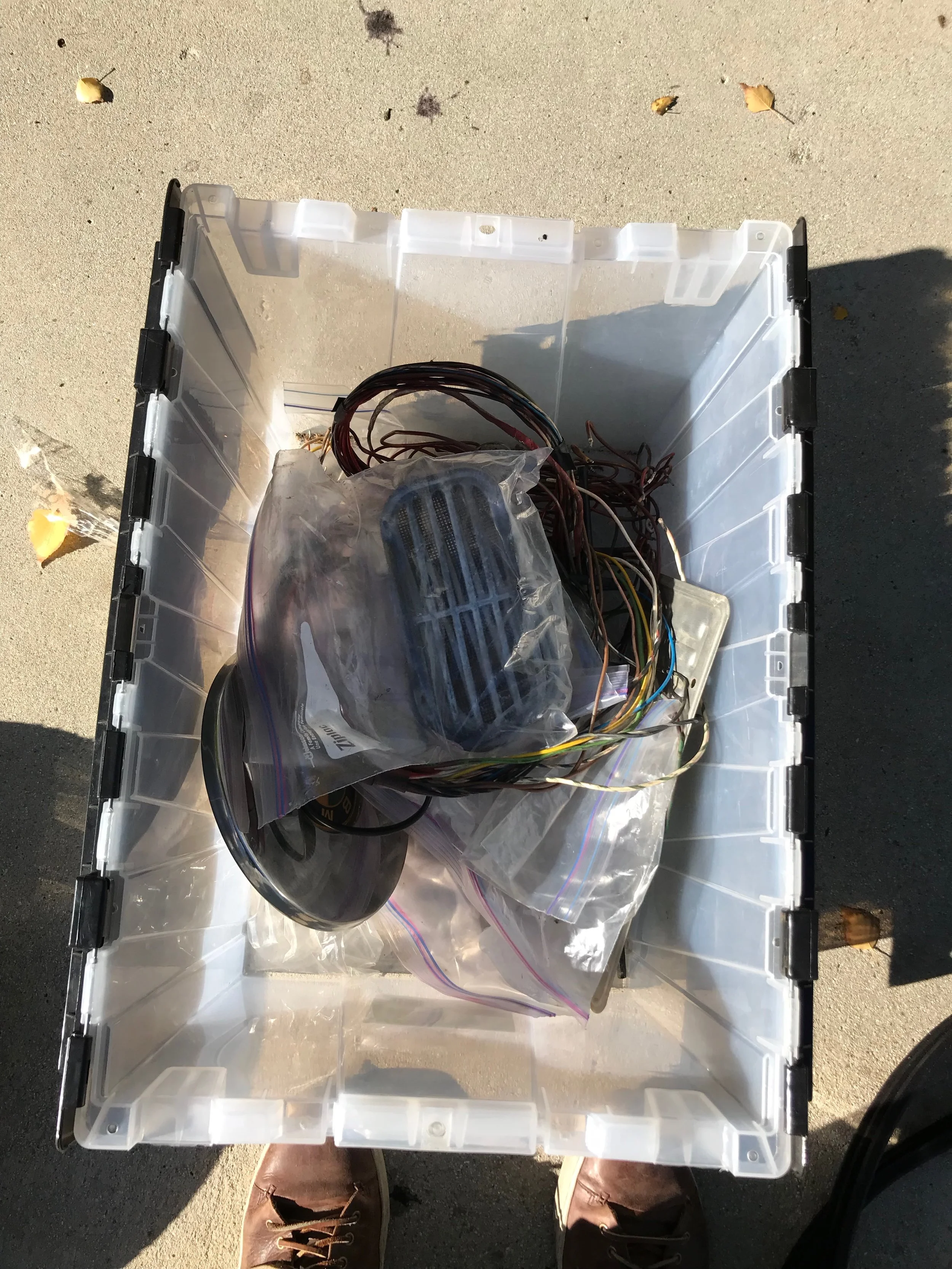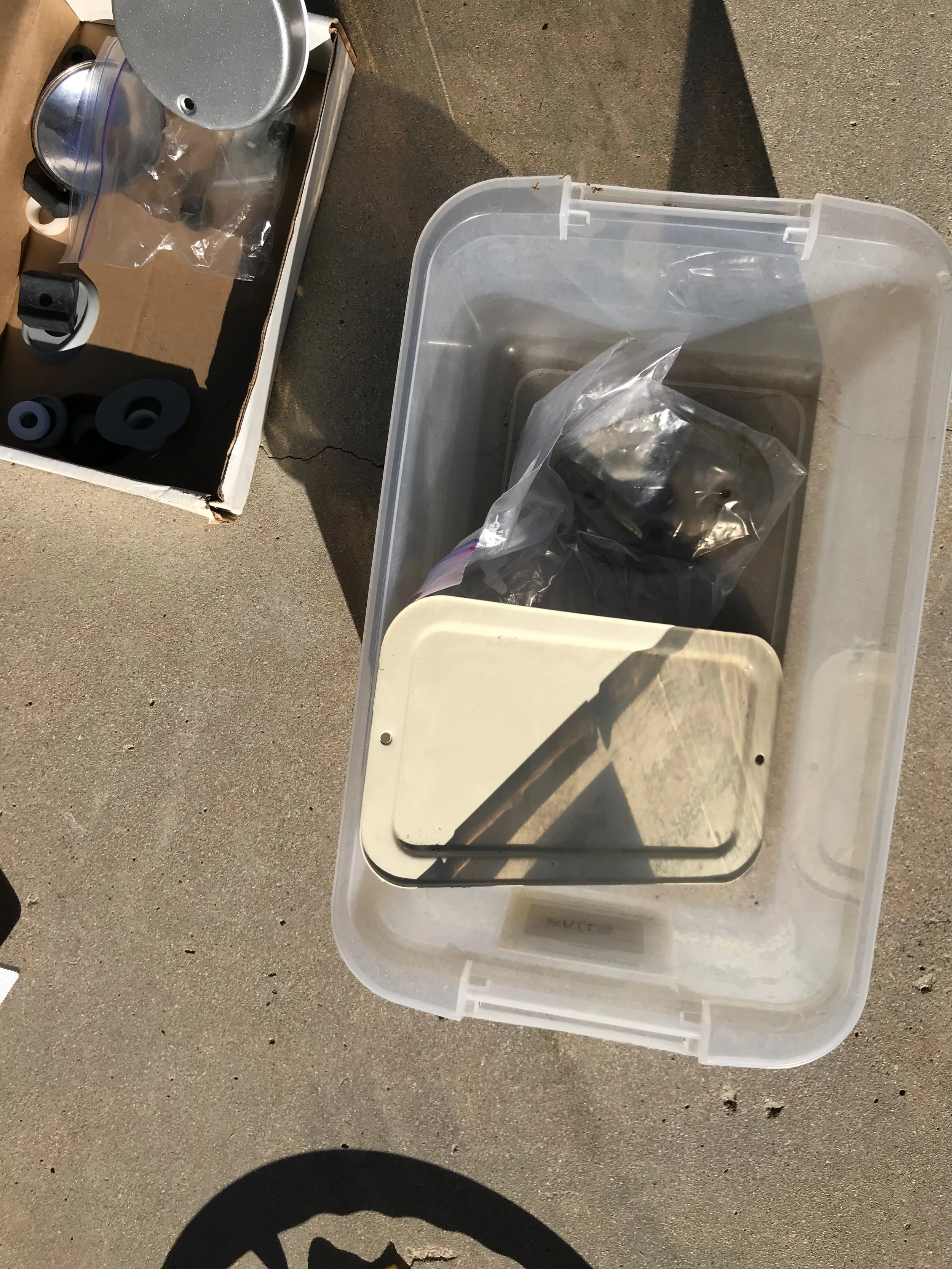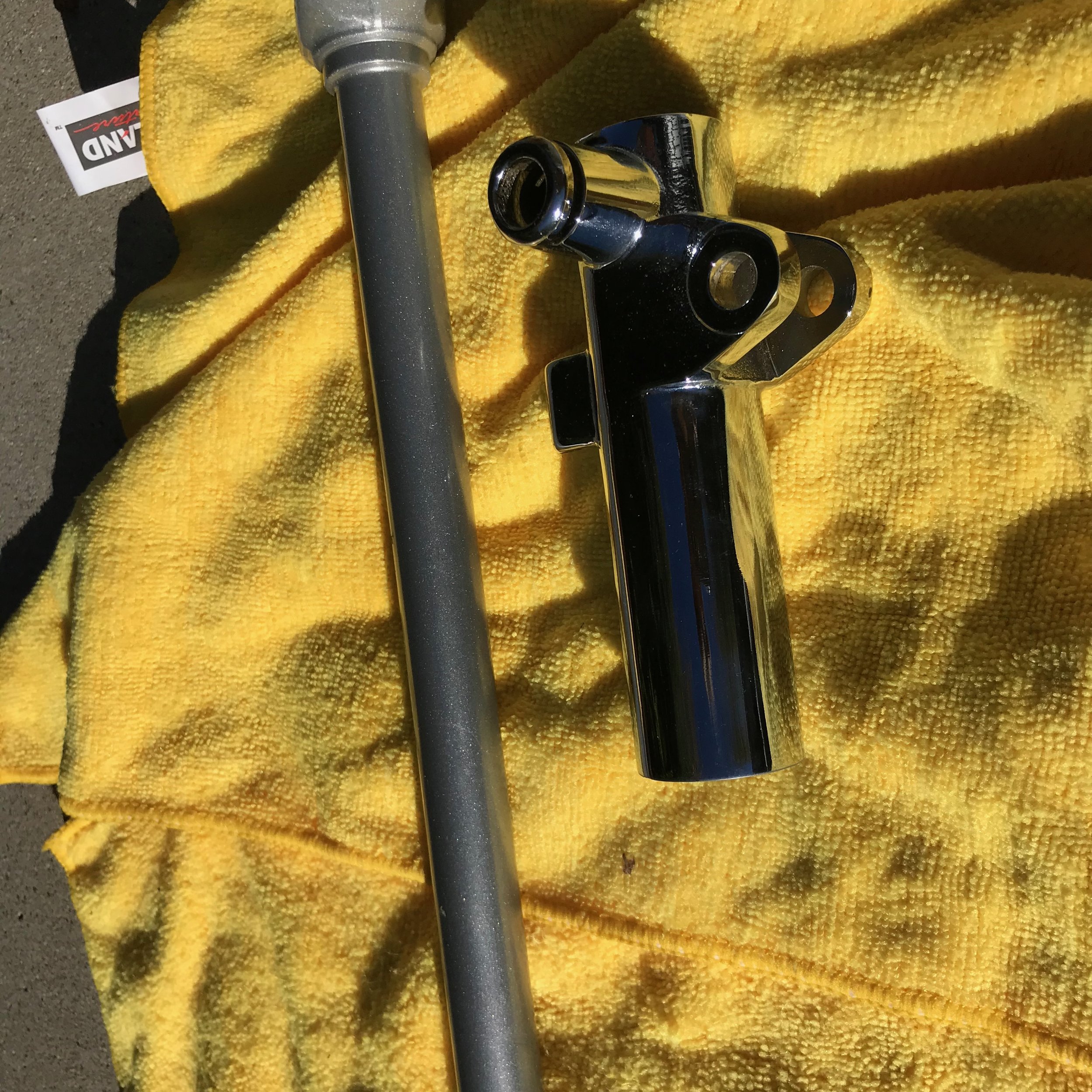1957 BMW Isetta 300: Deluxe “Tropical” Model
Desirable Color Combination.
Divorce forces sale.
Frame-off Restoration:
· Media blasted to bare metal.
· Prepped and painted by Starbuck Design, one of Southern California’s best custom paint shops and experts in Isetta restoration. ($6,500 paint job)
· Major mechanicals repaired or replaced by Greg Hahs, “The Isetta Dude”. Work performed by Greg Hahs includes:
· Redone brakes.
· New Fuel Pet-cock.
· New Master Brake Cylinder
· Restored Dyna-start system with new points.
· Restored Regulator.
Additional Work Performed on Car:
Front door glass and rear window glass and new molding professionally installed by Above All Glass in Thousand Oaks.
Restored steering wheel and steering assembly. (Needs to be installed)
Original curved stainless steel brightwork separating two-tone paint.
Sliding side windows with new rubber molding. (Needs to be installed)
Freshly powder coated rims.
Virtually every bolt, nut and washer was cleaned and plated by Burbank Plating.
New Wire harness. (Needs to be installed.)
Front headlights and rear lights need to be replaced.
New tires.
New Bushings.
About the BMW Isetta 300:
The egg-shaped Isetta caused a sensation when it was introduced to the motoring press in Turin, Italy in November 1953 as it was unlike anything seen before and is today generally considered to be the best microcar ever, certainly its the archetypal 'bubble car' and is today recognized and loved worldwide by both classic car collectors and microcar enthusiasts. Its totally unconventional design caused a furor at its introduction in Turin and from this influential debut grew a number of licensed branches worldwide with the most well know being obviously BMW in Germany where it became the obvious go to car of the working man and by November 1955, ten thousand had been built.
Small at only 7.5 ft long by 4.5 ft wide and egg-shaped, with bubble-type windows, it was seen by BMW as filling a gap between their motorcycle range and the luxury 501 models and the entire front end of the car hinged outwards to allow entry. In the event of a crash, the driver and passenger were to exit through the canvas sunroof. The steering wheel and instrument panel swung out with the single door, as this made access to the single bench seat simpler. The seat provided reasonable comfort for two occupants and a small child. Behind the seat was a large parcel shelf with a spare wheel located below. A heater was optional, and ventilation was provided by opening the fabric sunroof.
Initially power came from a 236 cc (14.4 cu in), 7.1 kW (9.5 hp) 2 stroke motorcycle engine and a manual gearbox provided four forward speeds and reverse. A chain drive connected the gearbox to a solid rear axle with a pair of closely spaced 25 cm (10 in) rear wheels. The first prototypes had one wheel at the rear, but having a single rear wheel made the car prone to roll-overs so the rear wheel layout was changed to two wheels set 48 cm (19 in) apart from each other. This narrow track eliminated the need for a differential. The Isetta took over 30 seconds to reach 50 km/h (31 mph) from rest. Top speed was only about 75 km/h (47 mph). The fuel tank held only 13 litres (3.4 US gal; 2.9 imp gal).
In 1956, the government of the Federal Republic of Germany changed the regulations for motor vehicles. Class IV licences issued from that time onward could only be used to operate small motorcycles and could no longer be used to operate motor vehicles with a capacity of less than 250 cc. At the same time, the maximum capacity allowed for the Isetta's tax category was 300 cc. This change in regulations encouraged BMW to revise their Isetta micro cars. In February 1956 a 300cc engine was introduced. The engineers enlarged the single cylinder engine to a 72 mm (2.8 in) bore and 73 mm (2.9 in) stroke which gave a displacement of exactly 298 cc; at the same time, they raised the compression ratio from 6.8 to 7.0:1. As a result, the engine power output rose to 10 kW (13 hp) at 5200 rpm, and the torque rose to 18.4 N⋅m (13.6 ft⋅lbf) at 4600 rpm. The maximum speed remained at 85 km/h (53 mph), yet there was a marked increase in flexibility, chiefly noticeable on gradients and in October 1956, the Isetta Moto Coupe DeLuxe (sliding-window Isetta) was introduced. The bubble windows were replaced by longer, sliding side windows.
